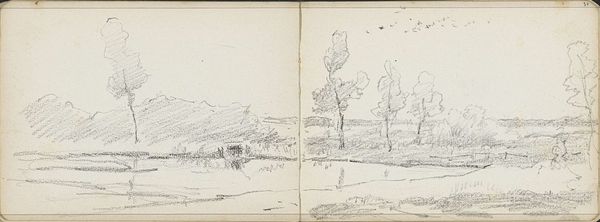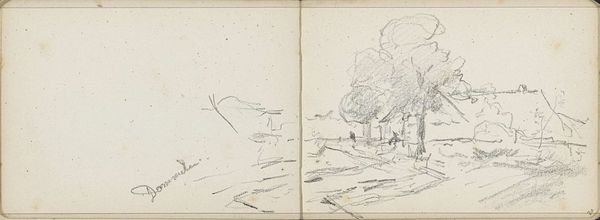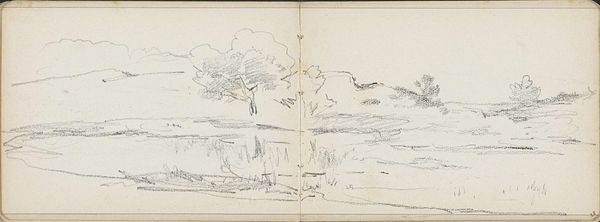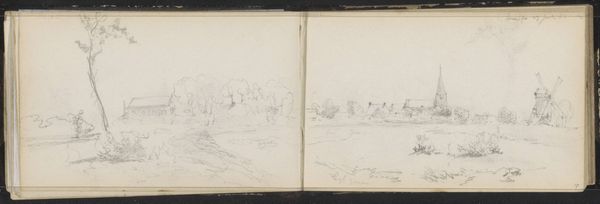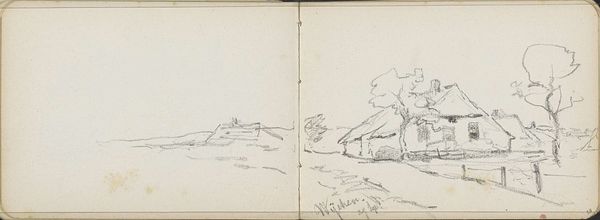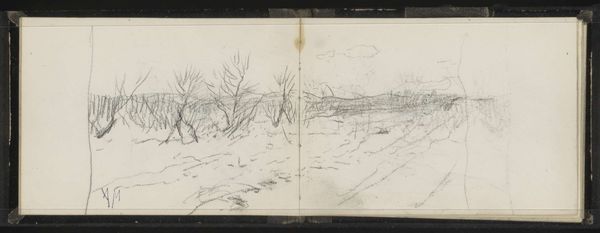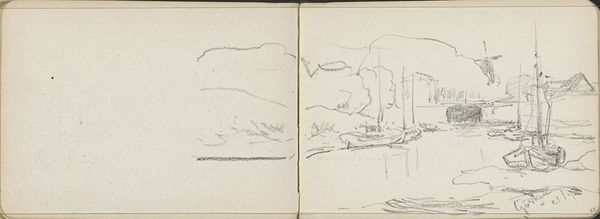
drawing, pencil
#
drawing
#
ink drawing
#
pen drawing
#
pen sketch
#
sketch book
#
landscape
#
personal sketchbook
#
ink drawing experimentation
#
pen-ink sketch
#
pencil
#
pen work
#
sketchbook drawing
#
sketchbook art
#
realism
Copyright: Rijks Museum: Open Domain
Editor: This is a double-page drawing, "Aangemeerde roeiboten aan een waterkant te Reeuwijk," attributed to Willem Cornelis Rip, dating from potentially 1866 to 1929. It looks like a sketch from a notebook, rendered in pencil and ink. The composition is very raw, almost ephemeral. What jumps out to you when you look at this piece? Curator: I'm immediately drawn to the labor inherent in the production of this drawing. Consider the physical act of sketching outdoors, the repetitive mark-making with pen and pencil. This wasn't a precious painting destined for a salon, but likely a working sketch, part of a longer process. Look at how the artist captured these boats, their texture. This kind of sketching would directly inform later, more 'finished' works, influencing both composition and perspective, isn't it? Editor: I suppose it's easy to forget the physical effort and materials that went into even what looks like a quick sketch. What can this emphasis on material production tell us about the piece, the period, and even Rip himself? Curator: I find these seemingly casual sketches tell us more about the means and modes of production than a formal portrait. These sketches can represent the underbelly of a consumerist and budding-industrial era when materiality becomes a primary aspect in making art. Editor: So, it's a glimpse into the working methods of an artist, emphasizing the materials and processes over the finished product’s potential commodification? It almost demystifies the art-making process. Curator: Precisely! The means by which it was constructed makes the idea or "aura" much more approachable. Perhaps even prompts further discussions or study into social stratifications within 19th century Dutch art. It is a portal to a studio, no? Editor: I had not looked at it like that before. Thanks! I find that perspective makes the sketch more tangible. Curator: It also adds layers of meaning and social context to what we might otherwise dismiss as a simple landscape drawing, no?
Comments
No comments
Be the first to comment and join the conversation on the ultimate creative platform.
